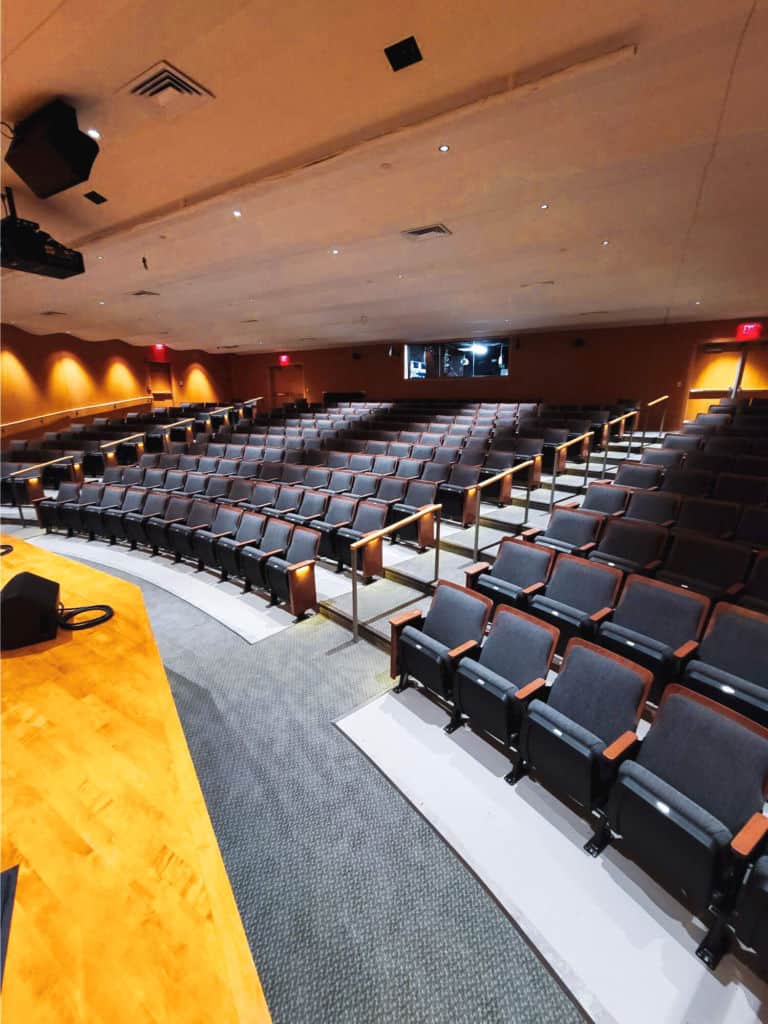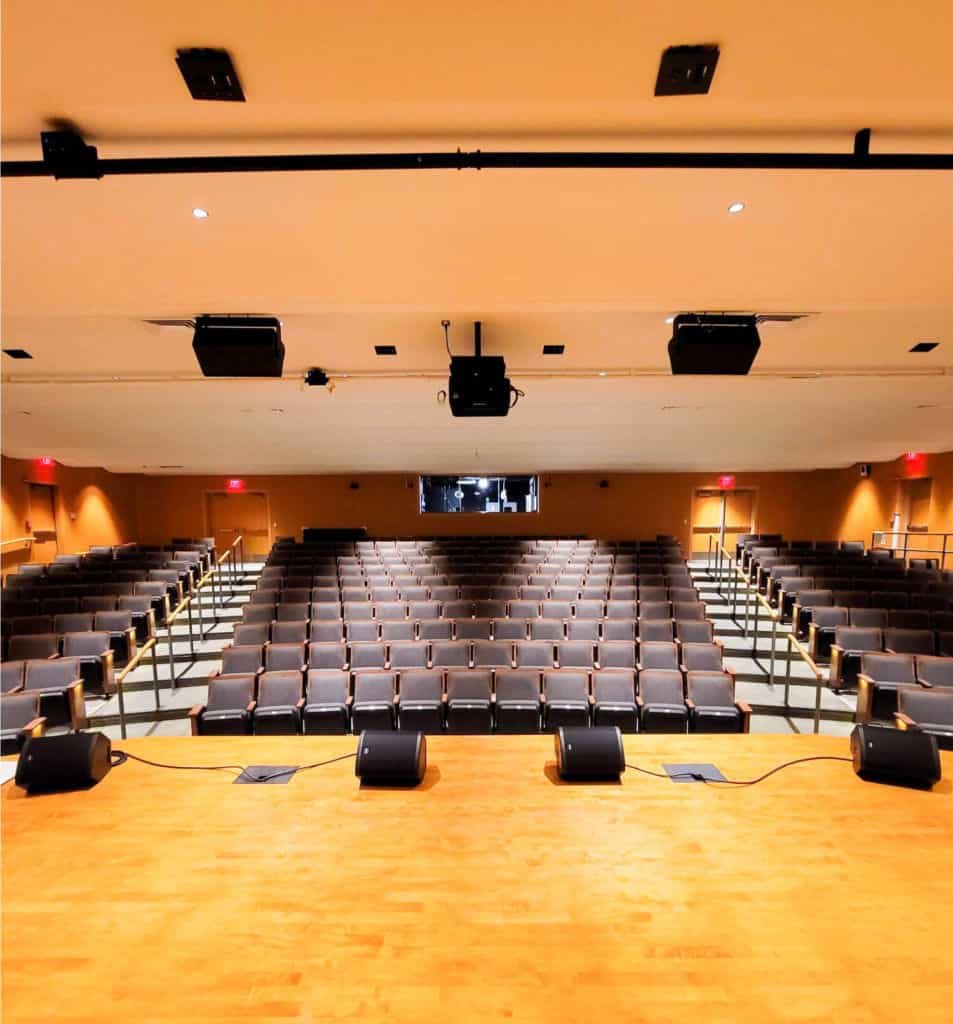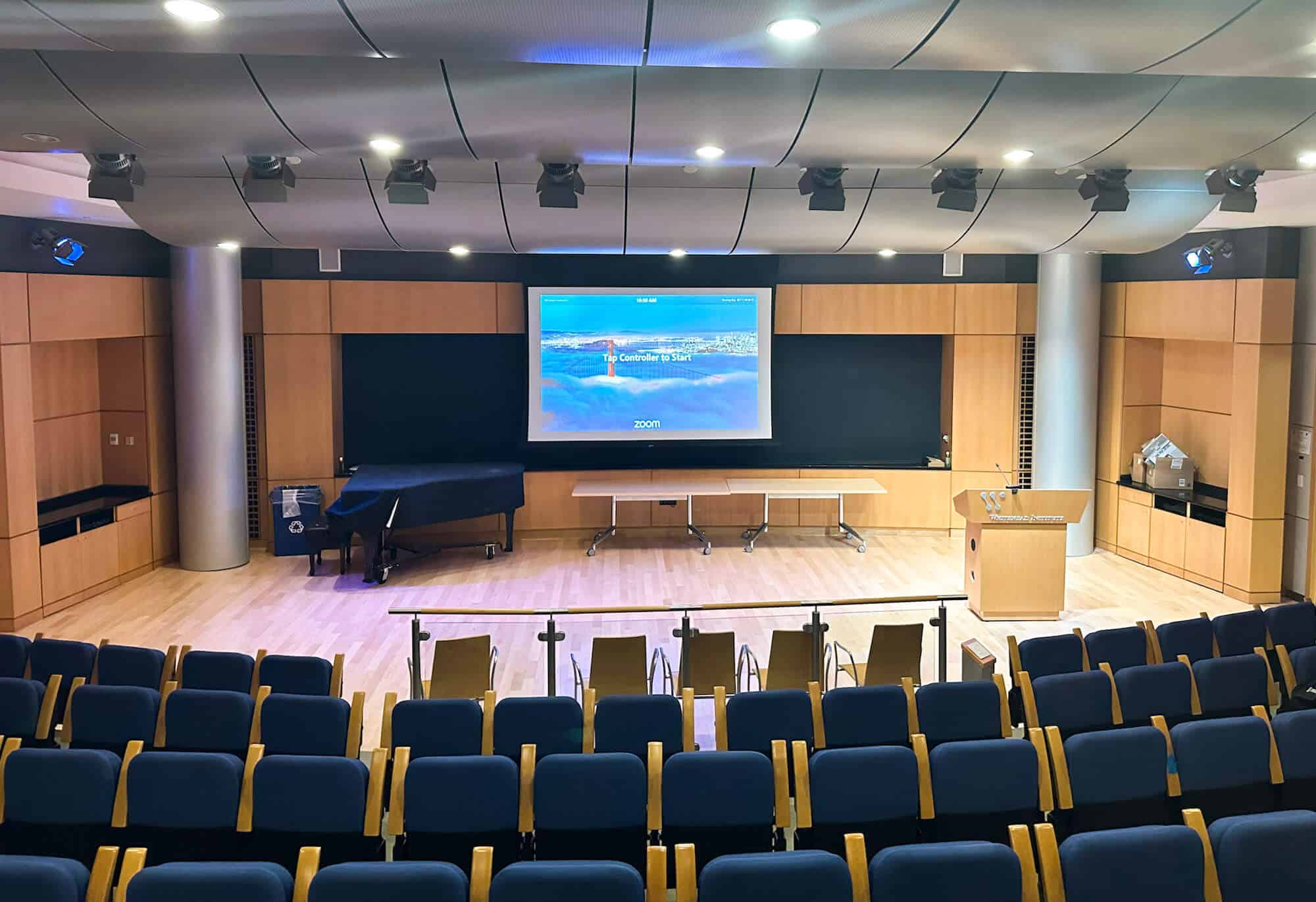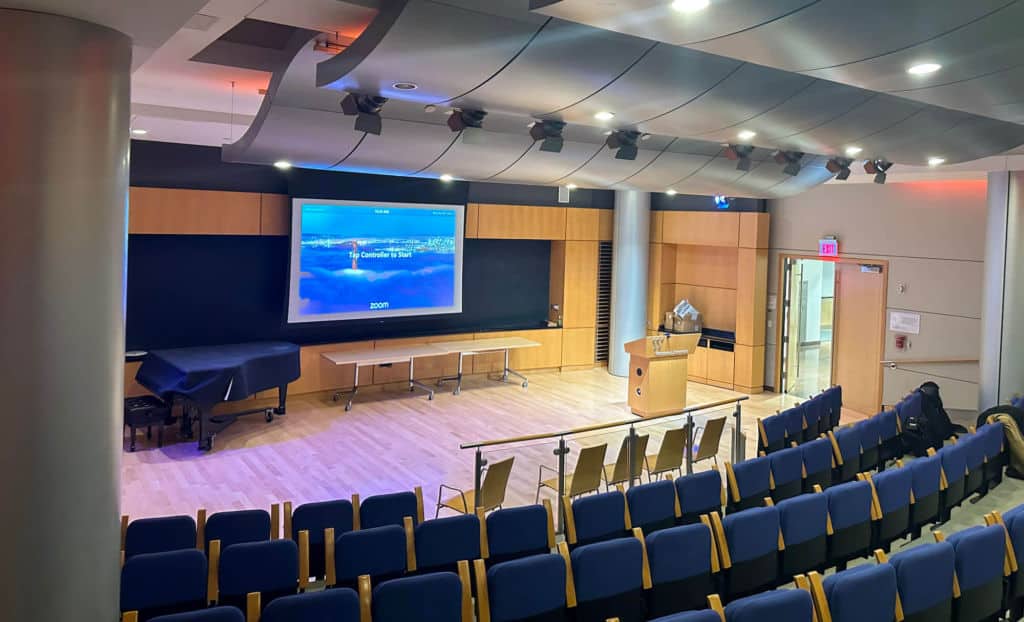From an AV design and integration standpoint, auditoriums present unique challenges.
Large-scale room environments like auditoriums — and even large conference spaces that seat up to 1,000 people — require an AV design that reaches every seat in the audience. Event staff need an auditorium AV integration that is both powerful and user-friendly in order to coordinate every aspect of a presentation or performance. A truly outstanding auditorium AV system considers not only sound and visuals, but acoustic management, recording technology and technical aspects such as staging.
Visuals and Presentation Displays
Audio Design
Efficient Design System
Lighting Design
Design and Examples
Visuals and Presentation Displays
An auditorium’s stage, as well as any screens or displays, must be within a clear and comfortable line of sight from every seat in the house. A traditional auditorium’s sloped floors and seating go a long way toward accomplishing this, but a high-quality auditorium AV system closes every gap.
A screen’s diagonal height should always be at least 1/6th of the distance between the display and the farthest seats to ensure visibility for all. Multiple screens placed along the run of seating or at adjusted angles at the front can accommodate the sightlines of even the largest auditorium.
Audio Design
Many factors contribute to a successful auditorium sound design. The size and shape of an auditorium can define much of its acoustic behavior, including longer reverberation times for larger spaces. Providing clear and audible sound output is crucial, but even poor acoustics can negatively impact the best quality equipment. Controlling mechanical noise and vibration from HVAC and other environmental systems, as well as mitigating external noise through the use of acoustics management products, should not be overlooked.
Efficient System Design
A simple, user-friendly centralized control for an AV system improves the experience of both presenters and in-house staff. Touchscreen controls on a tablet, or a simplified control board, are easier for venue staff to operate when compared with a professional sound board. They can also be configured to control every aspect of the auditorium AV system, including lighting, curtains, projectors, displays, cameras and conferencing software.
Cable management is also an important factor in AV system ease-of-use. Labeling and snaking cables can mean the difference between a smooth production and a disaster.
Lighting Design
Lighting is a critical element in live performances, aiding in visibility and affecting mood and ambience in your auditorium. From a simple arrangement to a full complement of flood and wash lighting, PAR cans and spotlights, moving heads and even laser lights, your lighting rigs can be configured to the central AV system control.
6 Examples of Auditorium AV Design
A Modern, Contemporary Space
This contemporary auditorium makes dramatic use of acoustic management products to add architectural flair to the ceiling. The rigging above the stage allows for additional light or sound components to be added to enhance a presentation.
Unique Shape and Function
The unique shape and function of this in-the-round example makes use of multiple displays placed at angles so that every seat in the house is a good one.
Enhancing a Place of Worship
This worship space features multiple screens, acoustic products, sound and lighting equipment all designed to include every member of a congregation.
User-Friendly Controls
This example shows the importance of user-friendly controls for the presenter.
A Variety of Architectural Solutions
This hangar-style ceiling meets acoustic challenges with architectural solutions, and lighting that integrates seamlessly into the design.
The Greenwich Library
This auditorium is capable of supporting local presentations, film festivals, in-person theater performances and live bands.
Presentation mode leverages a large ceiling recessed projection screen along with a laser LED projector. Source audio is available through ceiling speakers. Live performance mode allows for complete system control from the head end booth via a trained operator. Full mixing console, multiple wired\wireless mics, Dante stage boxes and stage monitors are just some of these advanced features offered.


Hiring a Professional Team
Talented, experienced AV consultants and integrators can help you make the right choices for your auditorium. Whether you’re designing a new space or looking to make your current one more effective, DGI can help. Contact us to find out how we can help make your auditorium AV design the best it can be.


